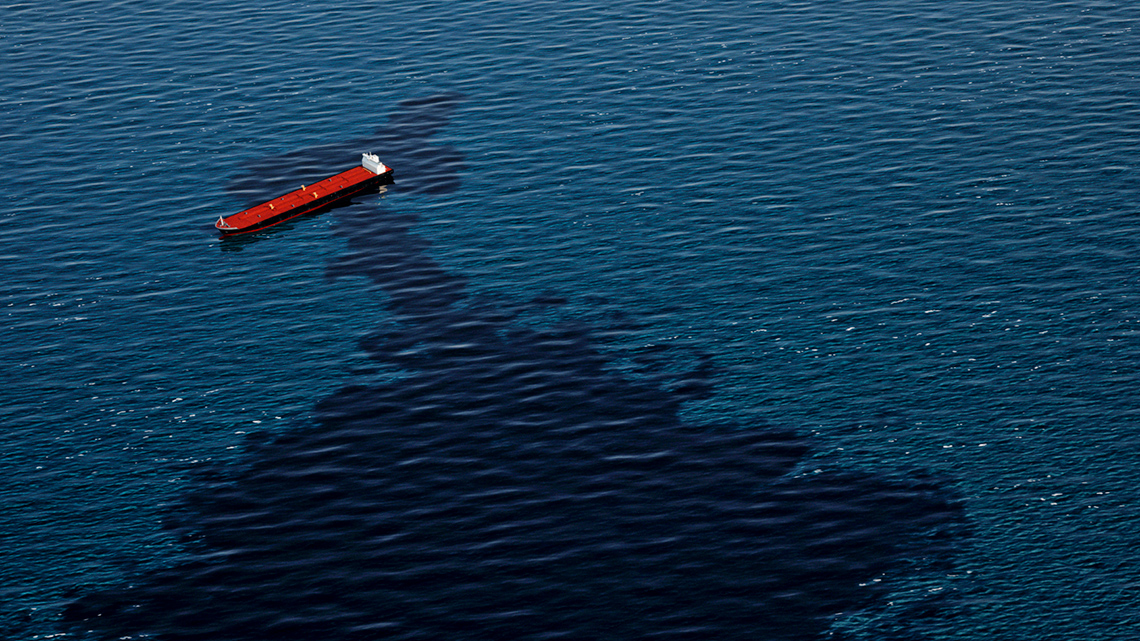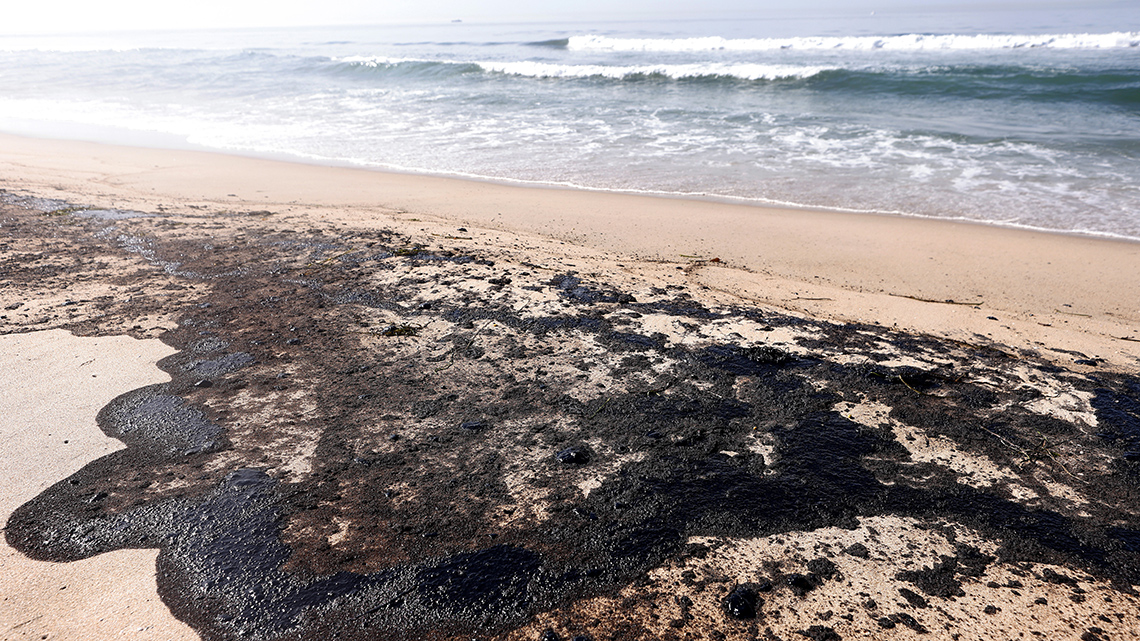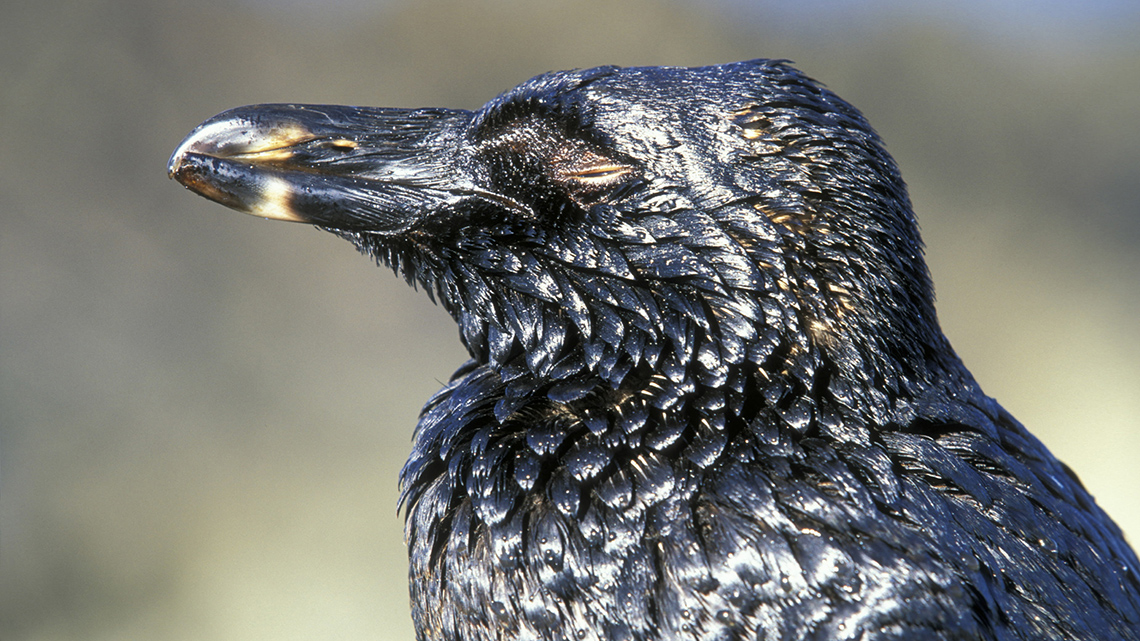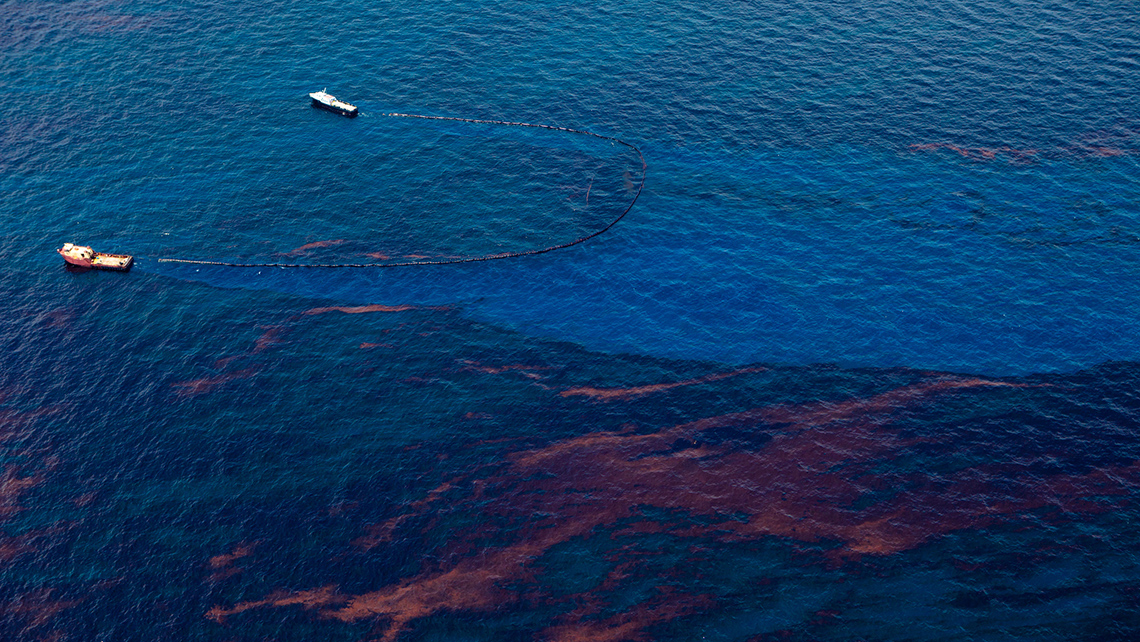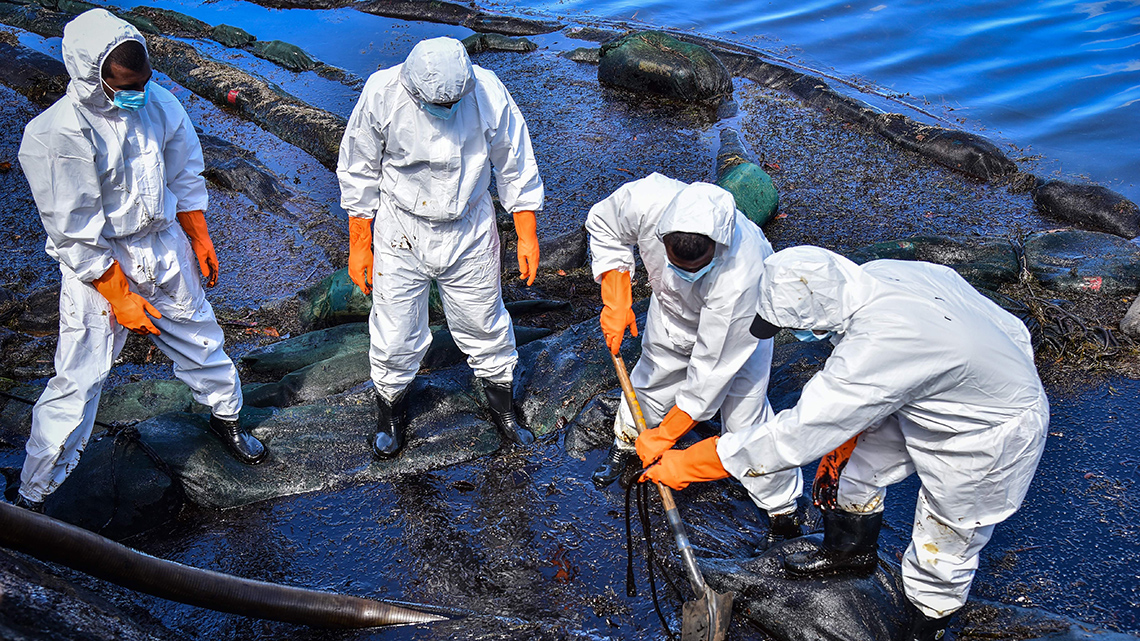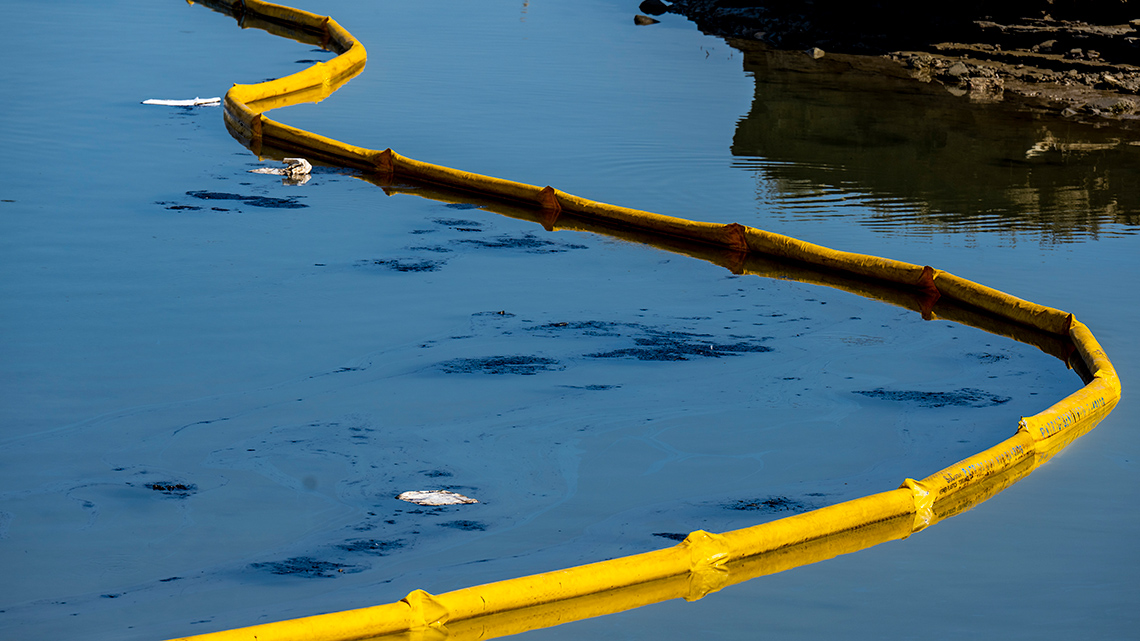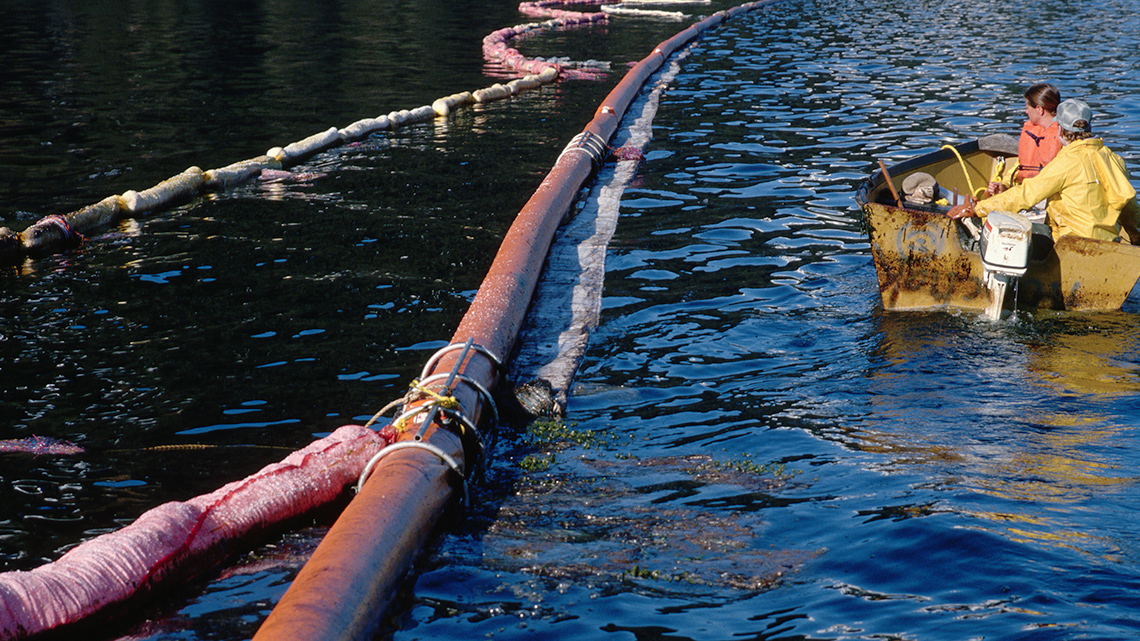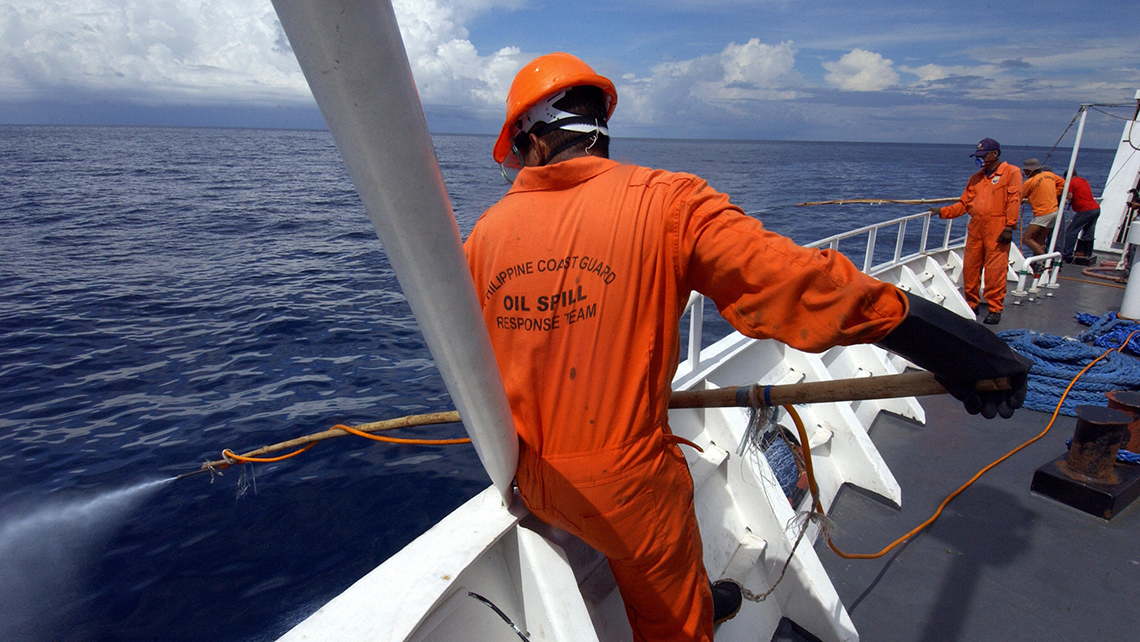Minds On
Oil spills
Investigate the following images of oil spills. Using the chart provided, or another method of your choice, brainstorm how oil spills affect humans and the environment.
Complete the Oil Spills Chart in your notebook or using the following fillable and printable document. If you would like, you can use speech-to-text or audio recording tools to record your thoughts.
| Brainstorm: How oil spills affect the environment | Brainstorm: How oil spills affect humans |
|---|---|
Press the ‘Activity’ button to access Oil Spills Chart.
Action
Task 1: Oil spills and the environment
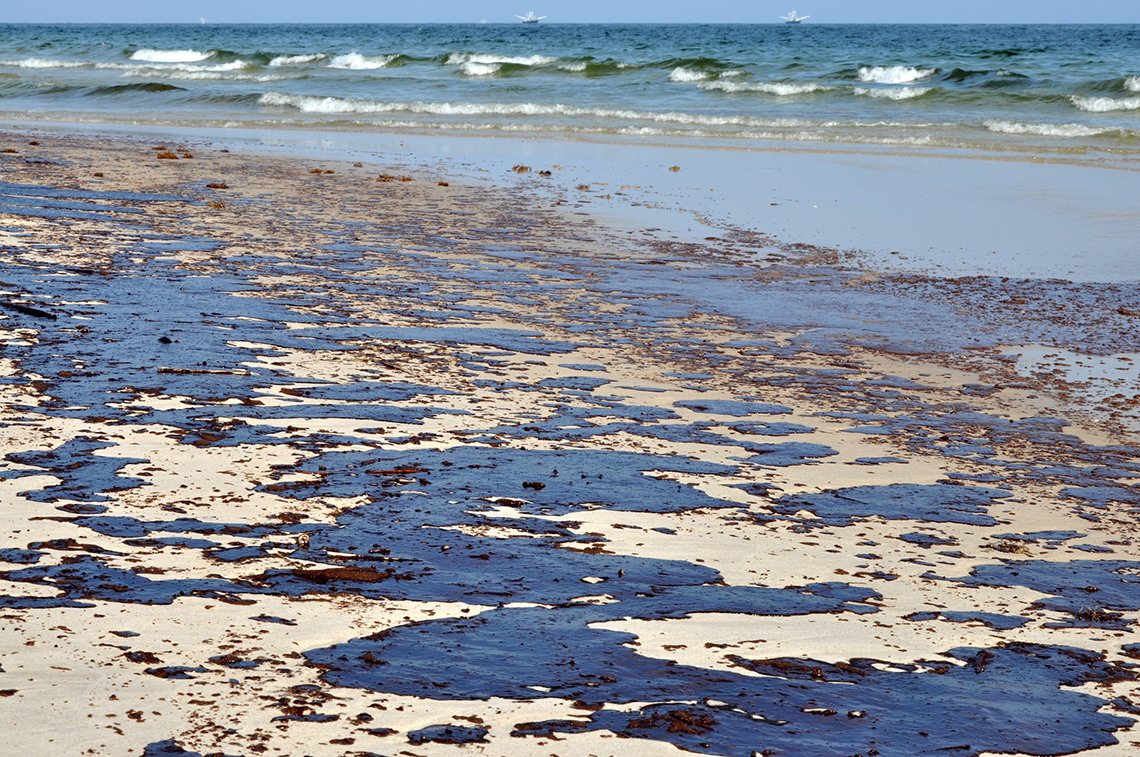
One of the most useful traits of fluids is that they can carry other substances over great distances for a long period of time. When that substance is harmful though, we have a problem. Our understanding of fluid technology allows us to extract oil from Earth’s crust to heat our homes, power factories, and fuel cars. However, the oil extracted from Earth’s crust has many damaging effects on the environment.
Explore the following video to examine an oil spill.
Oil is the most common pollutant of water with over three million tons of oil polluting the Earth’s water systems each year. When oil spills into water, the oil floats on top because it is less dense than the water.
Press ‘Definition’ to access the definition of the word density.
Density is a ratio that compares mass and volume for a substance. Particles that are closer together will have a higher density because they have a higher mass per unit of volume.
Oil has many toxic components that negatively impacts aquatic ecosystems and humans. Oil enters our water systems through a variety of processes:
- large oil spills from tankers
- offshore drilling
- burning
- commercial and domestic drains
- natural seeps
The extent of damage that an oil spill causes depends on many different factors, such as:
- the type of oil
- the location of the oil spill
- the size of the oil spill
- waves and wind
So, how do oil spills impact plants and animals?
Some of these oil spills actually occur on land and runoff brings this oil into the water systems. In Canada, approximately 12 oil spills occur each day that are more than 4000 litres and 11 of these are on land. When oil is spilled on land, it remains localized to one area because it cannot spread in the water.
Ontario connection
This learning activity highlights people, places, or innovations that relate directly to the province of Ontario. Enjoy the exploration!

Let’s examine a case study specific to Ontario to learn more about the real-life oil spill that occurred in 2015 in Gogama, Ontario. As you explore this case study, consider the following questions:
- What do you think?
- What do you wonder?
- What questions other questions might you have?
Reading Time
Case Study: Gogama, Ontario
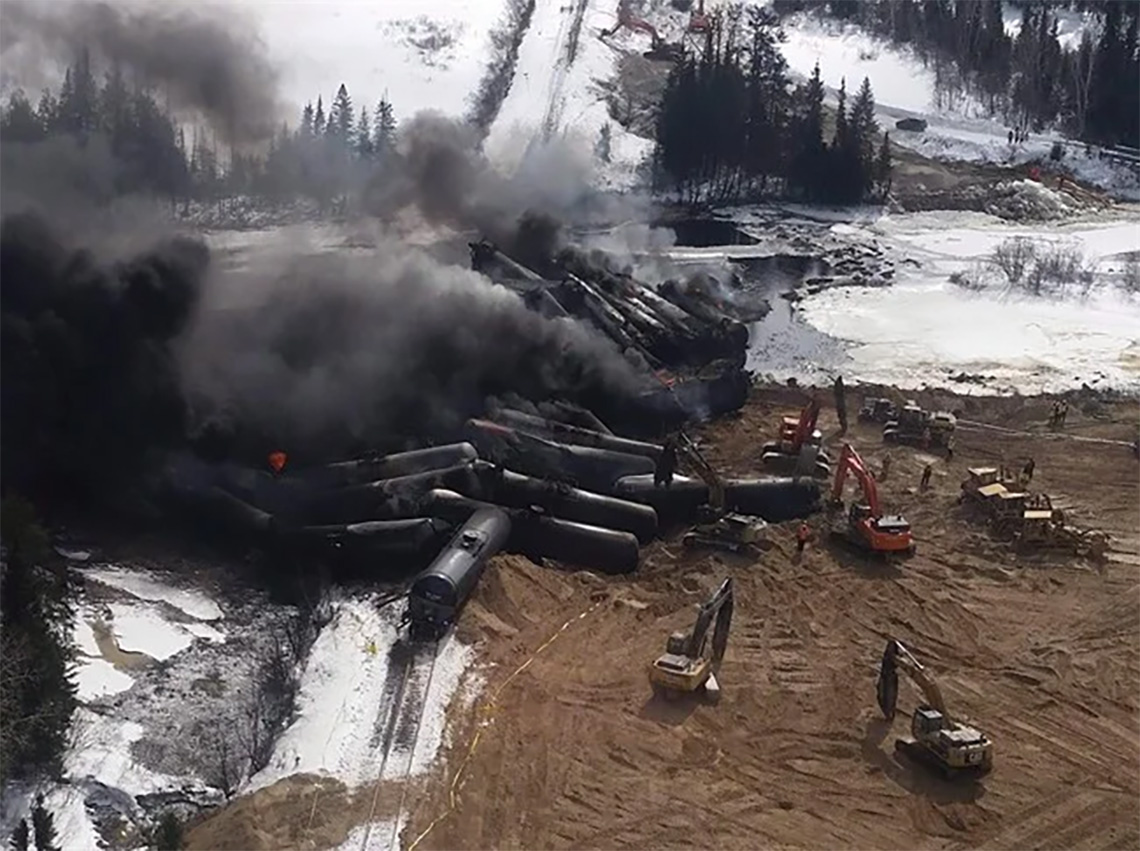
In March of 2015, a 94-car train carrying Alberta tar sands oil derailed two miles outside of Gogama, Ontario in which 35 cars went off the rails and seven caught on fire. Five of those cars landed in the Makami River, spilling an estimated 1 million litres of crude oil. This oil spill prompted officials to advise nearby residents to stay indoors and avoid consuming water from local sources. Booms were deployed into the river to try to contain any spilled oil, but they were not entirely effective.
The Mattagami First Nation community was advised not to consume water to avoid harmful toxins. They were informed that it was likely that all trees in the surrounding area would be coated with toxins, leading some to die off, and soil was likely contaminated as well. The Mattagami First Nation states that the oil spills not only damaged the local environment and surrounding waterways, but that it also impacted many facets of life for community members. The First Nation community is suing CN Rail for alleged environmental and cultural damage, indicating that it has created health risks for the population and damaged the community members’ ability to practice their traditions and treaty rights, including hunting, fishing and gathering. One major concern is that the spilled oil has attached itself to sediment in the river and the immediate area of Makami Bridge and residents can see an oily sheen on the surface of the water in many areas.
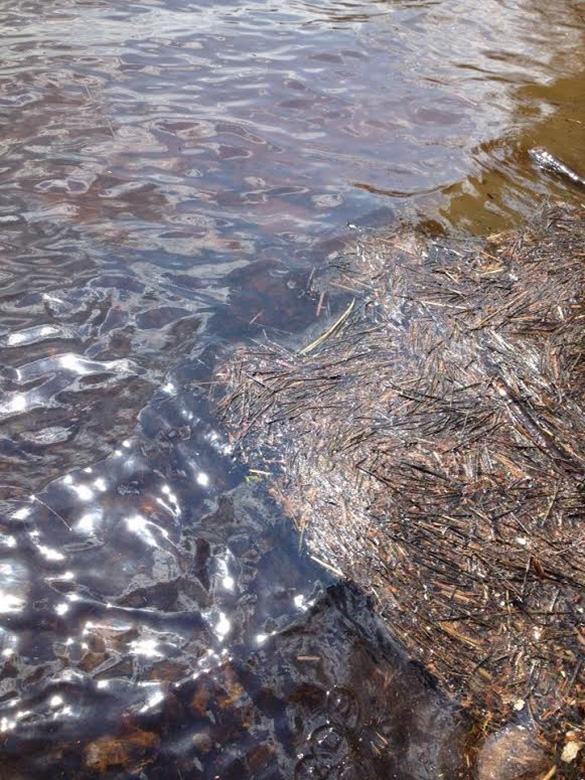
After the initial spill, it was unknown who would be responsible for clean-up efforts and costs which caused further delays. CN argued that the province should pay, while the province argued that CN should pay to clean up the spill. Residents were worried that CN would put a cap on the cost of clean-up efforts to accommodate their shareholders and keep expenses to a minimum.
After the spill and eventual clean up by CN, the local community in Gogama as well as Mattagami First Nation petitioned and protested for CN to return and clean-up the waters. The spilled oil could still be seen on the surface of waterways and concerned the community. CN refused for months to return to the community because they initially believed further dredging would damage the environment and that the waters were at a safe level of contamination. The community argued that the oil spill itself had damaged the environment in the first place. Later, CN found that their test results in some areas were beyond levels of safe contamination. The Gogama community and the Mattagami First Nation believe that the Ministry of Environment as well as the Ministry of Natural Resources should have intervened sooner, but instead took a “wait and see” approach and did not act in the best interest of the local people.
As of 2017, officials were still testing the Makami river and the groundwater at the derailment site and nearby communities and the Mattagami First Nation, and the lawsuit between the Mattagami First Nation community and CN Rail is still ongoing.
After investigating the case study, what do you think, what do you wonder, and what questions do you have?
Record your thoughts using the method of your choice.
Task 2: Clean up strategies
Cleaning up oil spills
There are many different methods that can be used to clean up oil spills in water. When an oil spill is on land, the methods that are used to clean up are very similar to those in the water. The choice of which method to use usually depends on factors such as cost, time, and environmental impacts. Explore the following methods.
Once you have reviewed the images and descriptions of different oil spill cleanup methods, you will compare the pros and cons of each method. Use the information from the descriptions in the carousel as well as personal research to arrive at your answers.
Before beginning your research, explore this video that explains the Scientific Research Process. This will help guide you as you work your way through this activity.
Complete the Pros and Cons Chart in your notebook or using the following fillable and printable document. If you would like, you can use speech-to-text or audio recording tools to record your thoughts.
| Oil Spill Clean Up Method | Pros | Cons |
|---|---|---|
|
Method 1: |
||
|
Method 2: |
||
|
Method 3: |
||
|
Method 4: |
||
|
Method 5: |
Press the ‘Activity’ button to access Pros and Cons Chart.
Let’s experiment!
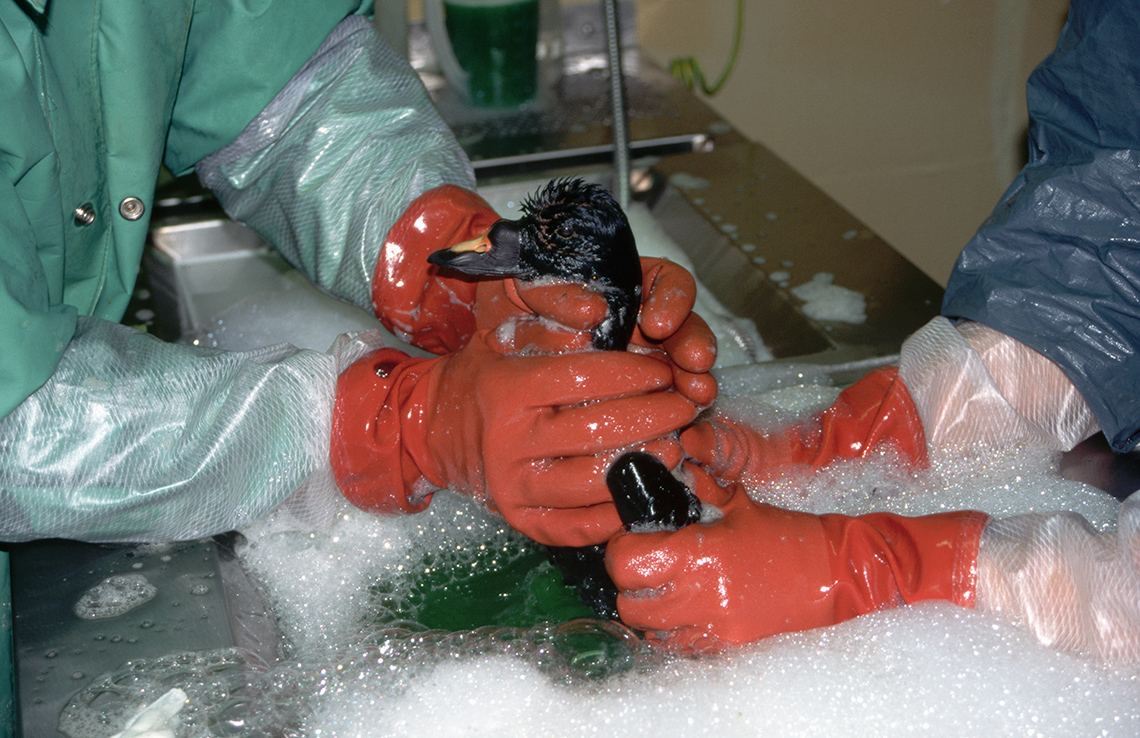
Environmental engineers work on developing solutions to environmental problems including oil spills. They are often familiar with the different cleanup methods and can assess which one(s) would be most effective. They would then communicate this plan with those doing the cleanup, the community, and those responsible for the spill.
In this experiment, you will be taking on the role of an environmental engineer to test different oil spill cleanup methods that you explored earlier in this learning activity. Take a moment to record your hypothesis on which oil spill cleanup method you think is going to be the most effective.
Before beginning your experiment, explore this video that explains the Scientific Experimentation Process. This will help guide you as you work your way through this activity.
Check out this video to learn about the steps of the Scientific Experimentation Process.
Safety
Before you explore the following experiment, let’s perform a safety check.
Hands-on Science
Investigating oil spills
For this experiment, we will be investigating oil spills and ways to remove oil from our waters.
Complete the Lab Sheet: Investigating Oil Spills in your notebook or using the following fillable and printable document. If you would like, you can use speech-to-text or audio recording tools to record your thoughts.
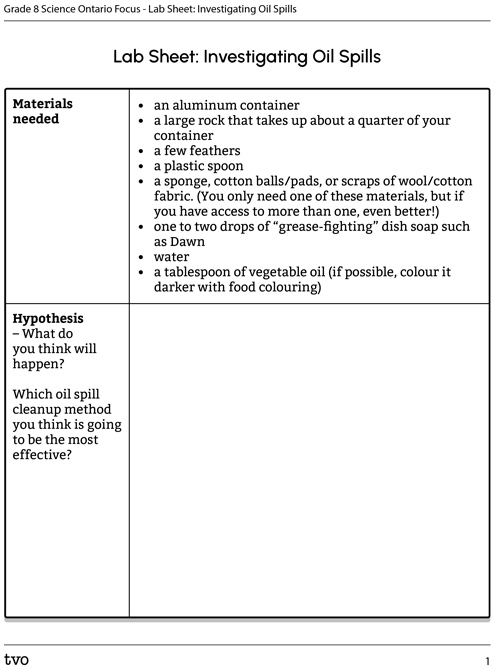
Press the Activity button to access the Lab Sheet: Investigating Oil Spills.
Activity (Open PDF in a new tab)Press the following tabs to access the materials and procedure for the Investigating Oil Spills experiment.
If you do not have access to materials, access the “Video demonstration” tab to explore the experiment in action. You can use the video to make your observations and draw your conclusions.
- an aluminum container
- a large rock that takes up about a quarter of your container
- a few feathers
- a plastic spoon
- a sponge, cotton balls/pads, or scraps of wool/cotton fabric. (You only need one of these materials, but if you have access to more than one, even better!)
- one to two drops of “grease-fighting” dish soap such as Dawn
- water
- a tablespoon of vegetable oil (if possible, colour it darker with food colouring)
Your objective with this experiment is to keep the oil away from the land (the rock) and determine which method of oil spill cleanup is most effective at removing the majority of the oil from the water.
- Place the rock to one side of your aluminum container and fill the container with water until it is approximately half full.
- Add the oil to your container and observe what happens. Note the movement of the oil in the water.
- Drop a feather into the container and observe what happens. Remove the feather after about 30 seconds. Record your observations of the feather.
- Use your spoon and try to skim (not scoop) the oil off the surface of the water. Record your observations on how much oil you were able to remove with this method. chart.
- Use the sponge/cotton/fabric to absorb the oil. Record your observations on how much oil you were able to remove with this method. If possible, use more than one of the absorbent materials.
- Stir in 1-2 drops of the dish soap (this is a dispersant). Record your observations on how much oil you were able to remove with this method.
Optional: If you have access to extra dish soap, try rubbing it into the feather that you removed from the oil and rinsing it under running water. Record your observations on how effective this was at removing any oil.
Check out this video to explore a demonstration of the Investigating Oil Spills experiment. Please note that materials and procedure in the video may vary slightly from what is listed in the previous tabs.
The source of this material is the TeachEngineering Digital Library at www.TeachEngineering.org. All rights reserved.

Science is about reflecting and reimagining. Was your experiment successful?
Is there anything that you would change about your experiment design to improve it or the outcome?
Even if your experiment was not successful, what did you learn or confirm about the topic you were investigating?
Consolidation
Task 1: Role. Audience. Format.

As you learned about oil spills and their impacts on the environment, you also learned about various perspectives that may be involved in an oil spill. Go back and review the Gogama case study if you wish. Using the following chart, choose one role and consider their perspective in a fictional oil spill. You will be writing from a specific role to a specific audience in a format of your choice. You should choose a format that you believe would be suitable for your role and audience. Your topic is Oil Spills in Ontario, and you should consider:
- why oil spills happen
- who it impacts (human and environmental)
- clean up and restoration efforts
- short- and long-term impacts
Choose one from each column (you do not need to choose all from the same row):
| ROLE | AUDIENCE | FORMAT |
|---|---|---|
|
Oil Cleanup Technician |
A Student |
Letter |
|
Oil Transporter / Shipper |
Community Member |
Audio Recording |
|
Community Member |
The Government |
Social Media Post |
|
Aquatic Life (Fish, Plants, Animals, etc.) |
Oil Producing or Shipping Company |
Comic Strip |
Task 2: Clean up pitch
In this learning activity, you learned about various methods used to clean up oil spills and even experimented with some clean up techniques yourself. It is unlikely that the natural environment where an oil spill occurred will ever be back in pristine condition. As an environmental engineer, how would you approach the cleanup of a major or minor oil spill in your local water system? Answer the following questions in paragraph format or an audio recording. Share with someone if possible.
- Which cleanup method would you use? Why?
- Would you use more than one?
- What factors would you consider when choosing a cleanup method?
Reflection
As you read the following descriptions, select the one that best describes your current understanding of the learning in this activity. Press the corresponding button once you have made your choice.
I feel…
Now, expand on your ideas by recording your thoughts using a voice recorder, speech-to-text, or writing tool.
When you review your notes on this learning activity later, reflect on whether you would select a different description based on your further review of the material in this learning activity.
